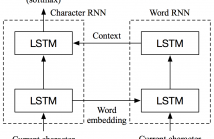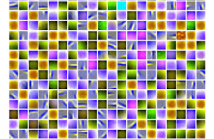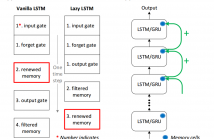- Read more about A Scalable Convolutional Neural Network for Task-specified Scenarios via Knowledge Distillation
- Log in to post comments
In this paper, we explore the redundancy in convolutional neural network, which scales with the complexity of vision tasks. Considering that many front-end visual systems are interested in only a limited range of visual targets, the removing of task-specified network redundancy can promote a wide range of potential applications. We propose a task-specified knowledge distillation algorithm to derive a simplified model with pre-set computation cost and minimized accuracy loss, which suits the resource constraint front-end systems well.
- Categories:
 16 Views
16 Views- Categories:
 37 Views
37 Views- Read more about Automatic Speech Emotion Recognition Using Recurrent Neural Networks with Local Attention
- Log in to post comments
Automatic emotion recognition from speech is a challenging task which relies heavily on the effectiveness of the speech features used for classification. In this work, we study the use of deep learning to automatically discover emotionally relevant features from speech. It is shown that using a deep recurrent neural network, we can learn both the short-time frame-level acoustic features that are emotionally relevant, as well as an appropriate temporal aggregation of those features into a compact utterance-level representation.
icassp2017.pdf
- Categories:
 195 Views
195 Views
- Read more about CHARACTER-LEVEL LANGUAGE MODELING WITH HIERARCHICAL RECURRENT NEURAL NETWORKS
- Log in to post comments
Recurrent neural network (RNN) based character-level language models (CLMs) are extremely useful for modeling out-of-vocabulary words by nature. However, their performance is generally much worse than the word-level language models (WLMs), since CLMs need to consider longer history of tokens to properly predict the next one. We address this problem by proposing hierarchical RNN architectures, which consist of multiple modules with different timescales.
poster.pdf
- Categories:
 21 Views
21 Views
- Read more about UNIQUE: Unsupervised Image Quality Estimation
- Log in to post comments
In this paper, we estimate perceived image quality using sparse representations obtained from generic image databases through an unsupervised learning approach. A color space transformation, a mean subtraction, and a whitening operation are used to enhance descriptiveness of images by reducing spatial redundancy; a linear decoder is used to obtain sparse representations; and a thresholding stage is used to formulate suppression mechanisms in a visual system.
- Categories:
 5 Views
5 Views- Read more about Detection of urban trees in multiple-source aerial data (optical, infrared, DSM)
- Log in to post comments
poster.pdf
- Categories:
 73 Views
73 Views- Read more about CLASSIFICATION OF UNDERWATER PIPELINE EVENTS USING DEEP CONVOLUTIONAL NEURAL NETWORKS
- Log in to post comments
Automatic inspection of underwater pipelines has been a task of growing importance for the detection of a variety of events, which include inner coating exposure and presence of algae. Such inspections might benefit of machine learning techniques in order to accurately classify such occurrences. This article describes a deep convolutional neural network algorithm for the classification of underwater pipeline events. The neural network architecture and parameters that result in optimal classifier performance are selected.
- Categories:
 35 Views
35 Views- Read more about SEQUENCE SEGMENTATION USING JOINT RNN AND STRUCTURED PREDICTION MODELS
- Log in to post comments
icassp2017.pdf
- Categories:
 10 Views
10 Views
- Read more about MEMORY VISUALIZATION FOR GATED RECURRENT NEURAL NETWORKS IN SPEECH RECOGNITION
- Log in to post comments
Recurrent neural networks (RNNs) have shown clear superiority in sequence modeling, particularly the ones with gated units, such as long short-term memory (LSTM) and gated recurrent unit (GRU). However, the dynamic properties behind the remarkable performance remain unclear in many applications, e.g., automatic speech recognition (ASR). This paper employs visualization techniques to study the behavior of LSTM and GRU when performing speech recognition tasks.
- Categories:
 11 Views
11 Views
- Read more about Onsager-corrected deep learning for sparse linear inverse problems
- Log in to post comments
Deep learning has gained great popularity due to its widespread success on many inference problems. We consider the application of deep learning to the sparse linear inverse problem encountered in compressive sensing, where one seeks to recover a sparse signal from a few noisy linear measurements. In this paper, we propose two novel neural-network architectures that decouple prediction errors across layers in the same way that the approximate message passing (AMP) algorithms decouple them across iterations: through Onsager correction.
slides.pdf
- Categories:
 76 Views
76 Views